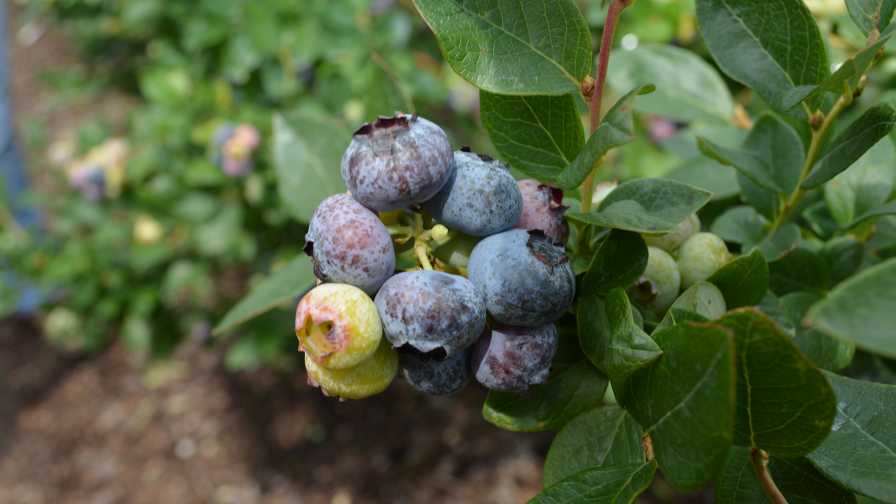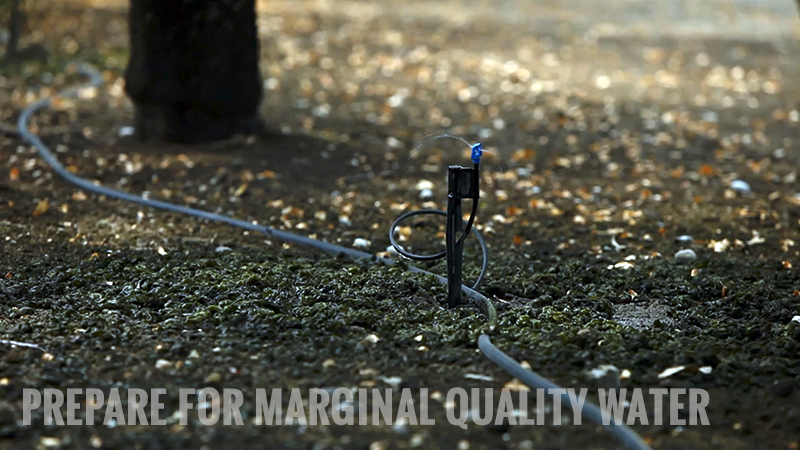Florida Blueberry Growers Challenged to Maintain Momentum

Photo by Frank Giles
[Editor’s Note: This article was written before Hurricane Irma’s impact]
Florida Blueberry growers harvested about 20 million pounds of fruit this past season. This was far better than the 13 million last year, but not quite as good as the season before when we produced 26 million pounds.
Most growers I have talked to said they had a “good” season. We kept the pests and pathogens at bay, but the producers who struggled had the most trouble with labor: A plentiful crop was on the bush, but harvest workers were hard to recruit or keep. Larger growers seemed to have an easier time with labor while the smaller ones found getting the fruit off the bush challenging. As a result, some growers picked every berry on the bush this season while others left some fruit to be lost when the bushes were trimmed to prepare for summer growth and next season’s crop.
Grocery store buyers also imported several million pounds of blueberries from Mexico, putting downward pressure on prices this season. Although we did see a significant price increase mid-season when it was realized the freeze damage to the Georgia crop was a reality and that their crop was going to be severely impacted.
Crop Forecasting and Communication
The Florida Blueberry Growers Association continues to work with the Florida Department of Agriculture, the University of Florida, and growers across the state to develop a way to be able to let our commercial buyers know the size of our crop each year. If we can give them this information, we have a reason to ask them to stay loyal to “local” Florida fruit and stay away from Mexican imports.
American consumers are used to having a year round supply of blueberries, and the grocery stores must meet this demand or lose customers. Let’s give the grocers a reason to stay with Florida blueberries: Information. Like most other industries, knowledge is power in the Florida blueberry business.
We also are working with UF/IFAS to fill the blueberry specialist position at the Gulf Coast Research and Education Center in Balm. We have several excellent candidates for the position; this specialist should be a conduit for information from Gainesville to the growers and from growers to the breeding program and other researchers at UF. Getting information flowing like this should help both the growers and UF get ahead on new varieties and also any threats to our crop from pests or disease.
Mechanical Harvesting and Grower-Driven Research
I’m also serving on the advisory committee for a University of Georgia project to develop a better mechanical harvester for southern highbush blueberries. Utilizing a specially developed sensor not much larger than an actual blueberry that can be placed in the bush, the team can test how changes to harvester equipment affect the fruit. The goal of this research is to come up with equipment that will do the job of getting our fruit off the bush with minimal loss, damage and bruising.
Machine harvesting is very important — we should not be leaving berries and profits in the field each season due to labor shortages or downward pressure on prices when northern state crops begin to harvest in higher volumes.
In addition, we are seeking to get funding for grower suggested research projects — guys in the trenches will help keep researchers on track in staying ahead of pest, variety specific and disease issues.
If we can meet these most important challenges, I think we will see our Florida blueberry industry continue to grow and thrive.










